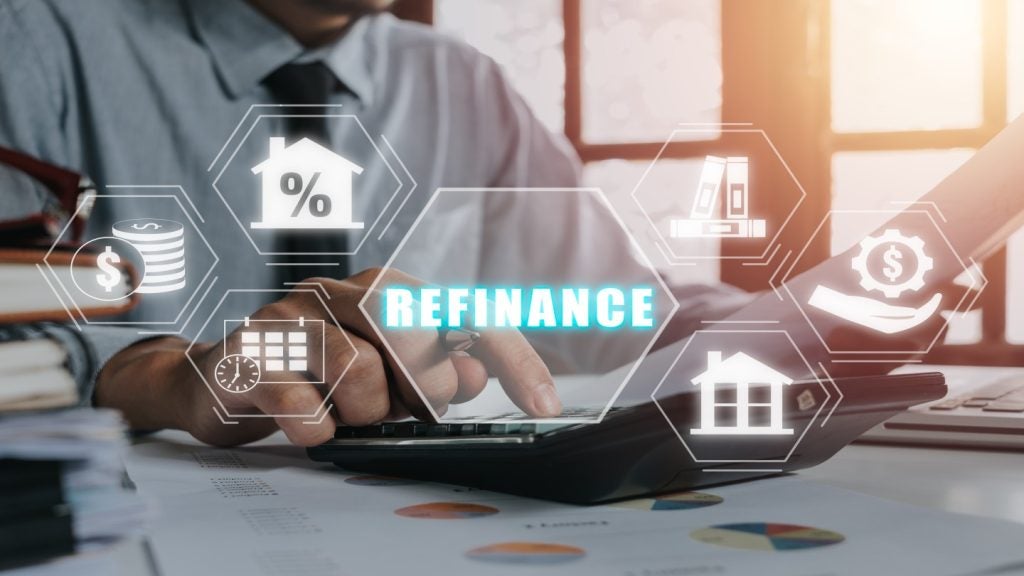
Both recent research and market data suggest the leasing industry in Poland is doing a pretty good job of convincing small businesses in particular that it offers an efficient financing mechanism. Paul Golden talks to leading figures in the country to find out more.
Data from the Polish Leasing Association – whose members account for around 90% of the domestic leasing market – indicates that 2017 was the fifth consecutive year of double-digit growth.
New business volume was up by 15.7% last year, and at €16bn (£13.96bn) placed Poland as the seventh-largest lease market in Europe.
As of 31 December 2017, the total value of the leasing industry’s active portfolio amounted to €28bn, and was only slightly below the value of total investment loans granted by banks to companies.
Alongside credit, leasing remains the key external source of investment financing in the economy and is used by approximately 600,000 companies across the country, of which around half are micro-companies with turnovers below €1.2m.
Bank-owned companies dominate the market, accounting for 79% of new business volumes with the balance split between captives (13%) and independent providers (8%).
How well do you really know your competitors?
Access the most comprehensive Company Profiles on the market, powered by GlobalData. Save hours of research. Gain competitive edge.

Thank you!
Your download email will arrive shortly
Not ready to buy yet? Download a free sample
We are confident about the unique quality of our Company Profiles. However, we want you to make the most beneficial decision for your business, so we offer a free sample that you can download by submitting the below form
By GlobalDataPassenger cars, light commercial vehicles and vehicles up to 3.5 tonnes remain the long-term driving force of the Polish leasing market. In 2017 the value of passenger cars and commercial vehicles financed by leasing companies in Poland amounted to €7.2bn, up 21.9% on the previous year.
The percentage of the market represented by business customers has risen steadily over the last few years, from 67.8% of new cars sales in 2015 to 70% in 2016 and 71.7% last year.
This segment of the market has been the beneficiary of fiscal stimulus, especially in the premium segment where the 50% VAT deduction on purchase, fuel, repair and maintenance will remain in force until the end of next year.
The machinery and other equipment segment, inclusive of IT, also grew strongly in 2017, up by just over 20%, with most segment categories – agricultural equipment, construction equipment, machines for plastics processing and metalworking – recording increases. This growth remains correlated with an acceleration of economic growth and use of EU funds from the multi-annual financial framework.
The results of the SAFE survey on access to finance for SMEs, published at the end of 2017 by the European Commission, show that 60% of Polish SMEs think leasing is the most important source of financing investment.
Mieczysław Woźniak, deputy chair of the executive committee of the Polish Leasing Association and member of the board of directors at Leaseurope, says the main challenges facing the industry relate to regulatory and prudential supervision issues, ensuring a safe and stable business environment and disruptive factors resulting in changes to current business models.
“As far as regulatory and prudential supervision issues are concerned the key topics are customer data protection, the insurance distribution directive, anti-money laundering and the new accounting standard IFRS 16,” he says.
“In addition to these, at local level we are discussing changes in real estate regulations in order to develop property leasing.”
In relation to real estate leasing, the Polish Leasing Association is suggesting changes in the taxpayer definition so lessees fall within that category, with all associated rights and duties.
The leasing industry is also calling for changes in the civil code aimed at modifying the leasing agreement definition, which would allow for the conclusion of paperless contracts.
According to Rafał Piskorski, CEE region general manager at DLL, the most important development in the leasing industry over the coming years will be the digitisation of the leasing process, which he believes will increase the industry’s competitiveness.
“We strongly believe in servitisation – the ability of customers to take full advantage of the benefits associated with using equipment, without the obligations and costs of ownership,” he says.
“This requires manufacturers and distributors to offer more sophisticated usage-based options – options that can be delivered ‘just-in-time’ and are coupled with maintenance and service packages that keep equipment running at optimal levels.”
The Polish economy is still dependent on EU subsidies, so the effective distribution of these subsidies will have an influence on investment levels and also on the prosperity of the leasing industry, explains SGEF Poland CEO Lech Zeyer.
“Leasing companies in Poland also provide loans, so we benefit when loans are the only acceptable form of financing by EU subsidy programmes,” he says.
“The acceleration of public investment has a positive influence on sales and financing of machinery and vehicles, and easy access to leasing is yet another contributory factor – most vendors offer leasing and most of the banks have a leasing subsidiary, although leasing companies tend to be much faster in evaluating leasing applications than banks are when approving loans.”
Poland is one of the European leaders in international transport and forwarding services. However, Zeyer admits that the leasing industry is concerned that recently introduced regulations by some countries relating to international forwarding might have a negative influence on the level of truck tractor sales and financing.
Konrad Wiśniowski, managing director at Grenke Poland, observes that the Polish lease market deviates from that of many western European countries in that it is heavily dominated by traditional assets such as light vehicles and heavy transport, with IT only representing just over 1% of all assets financed.
The other notable characteristic is that the Polish market is still very much ownership-driven, and leasing instruments that promote long-term usage rather than ownership are only just starting to gain significance, he adds, suggesting that the intensity of the price competition in the market over recent years is starting to ease.
“This is evident in a visible transition towards the quality and service the industry provides for its clients,” says Wiśniowski.
“The main focus is on the speed of the decision and the flexibility of the offering. We can also observe the growing impact of fintech solutions, which brings new qualities to the market and are really agile in their approach.”
To assess the growing importance of leasing among companies in Poland, it is necessary to look at the evolution of the industry since Poland joined the EU 14 years ago, suggests Radosław Kuczyński, CEO at Europejski Fundusz Leasingowy (EFL).
“In 2004, lessors in Poland financed assets worth PLN14bn [€3.32bn] – since then we have recorded almost a fivefold increase,” he says. “This is an impressive result in comparison to other EU countries.”
The most recent quarterly survey conducted by EFL among SMEs in Poland showed that the primary source of financing was their own resources. However, in terms of external support, leasing was the most popular option, used by 39% of the companies surveyed.
A clear trend in the use of financial products can be seen by looking at the size of the company, adds Kuczyński.
“The more employees a company has, the more it uses lease services,” he says. “While only 23.5% of micro-enterprises use leasing, among medium-sized businesses this figure more than doubles to 58%.” In terms of industries, retail and transport companies are dominant.
ING Lease (Poland) CEO Ewa Łuniewska says growth in leasing activity this year will be consistent with the forecast increases in private investment and economic development in Poland, and will represent the sixth consecutive year of double-digit growth.
“The structure of economic growth and the acceleration of the use of EU funds make machine financing the main driving force behind the development of the entire leasing industry,” she continues.
“Market development will still be based on the financing of light vehicles – due to strong domestic demand and favourable fiscal provisions – and the financing of heavy vehicles due to the growing volume of transport and further economic growth in the euro area.”
In addition to digitisation of the leasing process, other priorities for the lease industry include development of research projects and opening up to new trends in key areas of the market, such as the growing role of mobility, new ways of using vehicles, and the sharing economy.
Asked about his expectations for market growth over the remainder of 2018, Wiśniowski states that Grenke overachieved on its target for 2017, registering 43% growth year-on-year.
“This means we outperformed the industry and the IT and technology market, which is our core market,” he adds.
“Regardless of the positive forecast for the overall market in 2018, we expect to do the same this year. Our main focus has always been on IT and technology and the potential of this market is obvious with the current penetration rate.
“At the same time we are expanding our small ticket division to other assets, so we are very positive.”
BNP Paribas Leasing Solutions Poland also grew its business at a faster rate than the overall market – by 32% last year, notes managing director, Mariusz Tarasiuk, who again refers to the importance of economic growth and EU funds.
“The Polish central statistics office states that our GDP grew by 4.6% in 2017, which puts us in a leading position in the EU and represents the best outcome for seven years,” he says.
“European funds have completely changed our agriculture market. It is interesting that the most popular option among our farming clients is loan rather than leasing. So far, they prefer to own the asset rather than rent it, but we see an emerging trend for more advanced products.”
Woźniak observes that over recent years the Polish Leasing Association has undertaken a number of initiatives concerning legal and tax regulations that were positively received by government bodies and subsequently approved by the parliament.
Examples of such initiatives include making re-lease possible, and new solutions relating to lease agreement assignment in terms of tax settlements. For real estate leasing the minimal lease tenure was shortened from 10 to five years, and changes introduced in tax laws open the possibility of intangible asset leasing.
He expects another year of double-digit growth in 2018, predicting an increase of 15% in new business volume based on a number of factors, including the projected increase in private investments and anticipated economic growth; accelerated use of EU funding stimulating investment in machinery and equipment financing; favourable fiscal regulations for cars and light vehicles; growing volumes of goods transportation; and further economic growth in the eurozone leading to increased heavy-duty vehicle financing.
Piskorski believes leasing penetration is set to grow in the soft assets segment – technology, healthcare – and notes that forecast total leasing market growth of 15% for 2018 would see transactions reach €18.4bn.
“The main growth drivers this year will be the well-developed Polish economy and the acceleration of the usage of EU funds for 2014-2020,” he adds. “As a result, the equipment market will become the main driving force for the entire leasing industry.”
Zeyer accepts that the exceptional growth of the market in the first two months of 2018 (29%) cannot be sustained, but he is confident that between 10% and 15% is achievable if the economy in Poland and across Europe maintains its current performance.
Kuczyński is another who believes that 2018 will be a good year for the leasing industry in Poland. “We expect private consumption growth to slow down slightly to reflect the fact that investment growth across the entire economy for the first three quarters of 2017 was only 1.1%.
“However, based on the final quarter of last year we expect that in 2018 we will see a revival in investment levels. We forecast that the value of financed assets by leasing companies will increase by 16.8%. Our experts agree that 2018 will be a year of dynamic growth of leasing in Poland.”
Tarasiuk shares that view, repeating that the first two months of the year were particularly busy. “Passenger vehicles will continue to be the main asset, and SMEs will continue to be the biggest part of the client base,” he concludes.
“Lessors will focus on this segment of the market, and I expect that we will continue our dynamic growth.”







